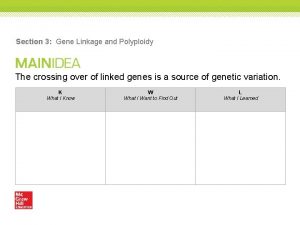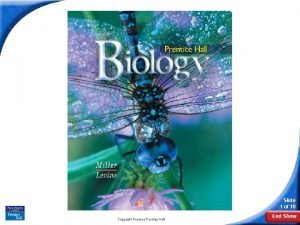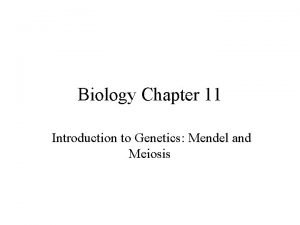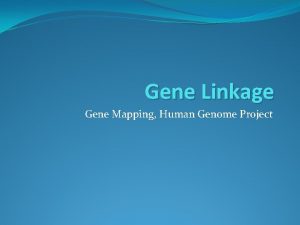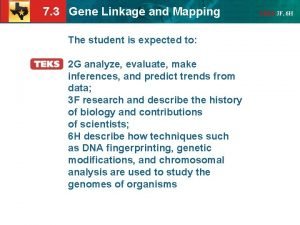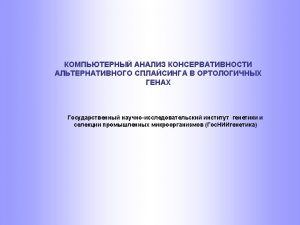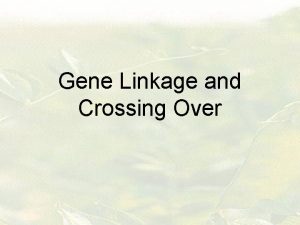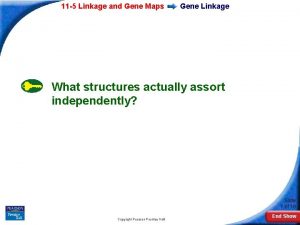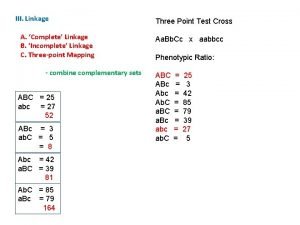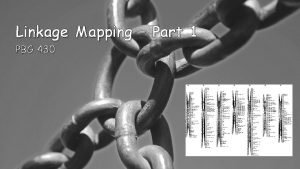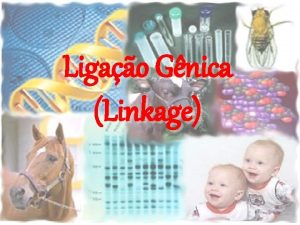MEIOSIS AND GENE LINKAGE Meiosis An organism must








- Slides: 8

MEIOSIS AND GENE LINKAGE

Meiosis � An organism must have 2 sets of genes one set from each of its parents. � Humans have 46 chromosomes: 23 from mom and 23 from dad � When the organism produces gametes, those genes must be separated so that each gamete only has one set of genes.

Meiosis �A cell containing 2 sets of chromosomes is said to be “diploid” (2 n). � Chromosomes from the male parent and female parent that correspond to each other are called “homologous chromosomes. ” � Since gametes have 1 set of chromosomes, they are said to be “haploid” (1 n).

Meiosis = the � “Fertilization” is the production of 4 union of two genetically different gametes, and the haploid sex cells resulting diploid cell (gametes). is known as a “zygote. ” At this � Male gametes are point, a new life has called “sperm. ” been created since it � Female gametes are has its own called “eggs. ” complete set of genetic information that is totally unique. �

Steps of Meiosis https: //www. youtube. com/watch? v=16 en. C 385 R 0 w


Gene Linkage � In his experiments with fruit flies, Thomas Hunt Morgan discovered that some traits were almost always inherited together (which appeared to violate the principle of independent assortment). � He found that genes tend to be inherited together more frequently if they are located close together on the same chromosome. (“linked genes”)

Gene Linkage However, if two genes are far apart on the same chromosome, then it is more likely that crossing over will separate them. � Such genes are “unlinked, ” as are those on separate chromosomes. � Using the rate at which linked genes were separated and recombined, a gene map was made that showed the relative locations of each known gene on a chromosome. (low % = less likely to be separated… closer together) �

